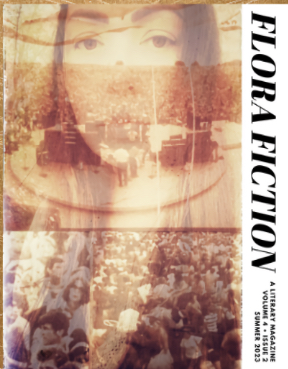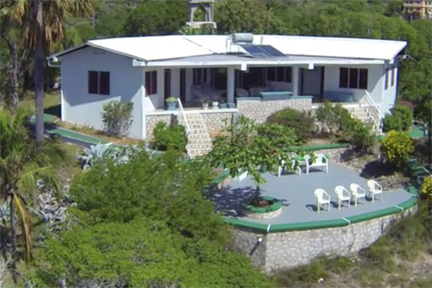There are not many occasions when a total fraud pleases a lot of people and does absolutely no harm. My friend Ellen carried out such a hoax for many years at the  Tanglewood Music Festival. I refused to participate the first few years, but it seemed so much fun, and so innocent, that I eventually succumbed and joined in the mummery.
Tanglewood Music Festival. I refused to participate the first few years, but it seemed so much fun, and so innocent, that I eventually succumbed and joined in the mummery.
Background: Serge Koussevitzky, then conductor of the Boston Symphony, brought the orchestra to an open-air setting in the Berkshire Mountains of western Massachusetts in 1934. It may have been the very first summer music festival; in any case it quickly became and remains today one of the best such musical events in the country, if not in the world.
It is a perfect setting: Days are warm, evenings pleasantly cool; rainy days are few. I suppose everyone sat on the lawn in the early years, but in 1938 a shed was built that underwent “major acoustical refurbishment” in 1959. It has since been named for the founder, and seats just shy of 6,000.
Folks in the shed, though, are a small part of the listening audience: As many as 12,000 can be seated on the huge lawn outside, where the music is nowadays amplified. “The music” originally meant the classics that the BSO played winters in Boston, but the offerings now include musical theater, jazz, pops – and works sung by a magnificent chorale.
Yet the music at Tanglewood must compete with another great experience: Outdoor dining. There may be a few who bring peanut-butter-and-jelly sandwiches to sustain them for the auditory experience. But far more often the “picnics” involve fine wine, candelabras, and an approximation of the cuisine one might expect in five-star restaurants. The outdoor diners include many who pay for tickets inside the shed for the music, but begin the evening with an alfresco meal.
In fact, any impartial observer might reasonably wonder whether the pre-concert hours – with canapes and fancy appetizers, a glass or two of good vintage, elaborate main courses sometimes served cold and sometimes braised on portable stoves, plus desserts that might be the final step in a one-upmanship contest among friends – whether those hours are primarily a warm-up for the performance, or whether the music is for most a pleasant finishing touch to a gustatory main event.
Let me back up. Early in the 1960s, my wife and I bicycled from Hartford, Connecticut to our first Tanglewood concerts, a six-hour ride (sixty-plus miles), carrying a tent and the wherewithal of rather basic meals. We were young and fit; it was a pleasant and not unduly taxing ride, enough to whet our appetites for fine music even if fine cuisine was beyond us.
We were the immediate envy of friends; two couples joined us biking the next year, and then a few more. We were still packing tents, which limited our ability to bring much more than basic nourishment, although a bottle or two of wine may have found the way to our bike racks.
And then: A more prosperous couple in our circle rented a house with a yard big enough for campers not far from the Tanglewood complex. They and another couple drove up, carrying not only our tents and sleeping bags, but also the wherewithal for an impressive pre-concert dinner out on the Tanglewood lawn.
Ellen, one of the new additions to the group we called the T-woodies, seized the occasion to stroll around and eyeball a lot of others at their elaborate picnics. And that night, although she didn’t share the secret with any of us, the seed of her scheme was planted in her mind.
She arrived the next summer prepared to award prizes: She had a half-dozen or so paper plates, each decorated with a stick-on dime store bow. Each plate was boldly but neatly magic-markered: “Best Appetizers”; “Best Main Course”; “Best Dessert”; “Best Wine Glasses”; “Best Candelabra”. There were a couple of others I can’t recall.
Before most of us were finished our own dinners, Ellen sallied forth with maybe five people to reconnoiter the grounds. It could only have been a token survey: There were several thousand alfresco meals out on that lawn, and Ellen’s co-conspirators reassembled in less than a half-hour for an informal canvass that amounted to a nominating committee.
Then – I declined to participate in the early years, so must describe those efforts as told to me – they followed Ellen around like a panel of jurors, nodding solemnly as she announced to one group after another that they had won a paper-plate-and-ribbon prize. They came back to report that everyone at every prize-winning picnic seemed thrilled. No one asked how they came to be an “official” panel of judges; they sometimes took a few moments of modesty to decide who should accept the honor on behalf of the group; and all the recipients treated their prizes as though they were gold-plated.
By the time I reluctantly joined the judging, word had gotten around: Now and then someone would approach our picnic to encourage us to consider theirs for this dubious distinction. The number of paper-plate prizes reached a dozen, including one or two blanks each year to be invented and labelled on the spot, like “Best Tablecloth.”
The music emanating later from the shed was always wonderful, and most of us fought off wine-induced naps to enjoy it. But the real highlight of the evening – for us as well as the winners – had been Ellen’s spurious citations. If the winners went home and were suddenly embarrassed to brag to neighbors about improvised and insubstantial plaques, we would never know. We went home confident that we had made the evening at Tanglewood one that several dozen people would long cherish.
Fraud? Banish the thought! Ellen had invented a festive persiflage that deserved a prize of its own.
-End-
Published by Flora Fiction Literary Magazine, July 2023





